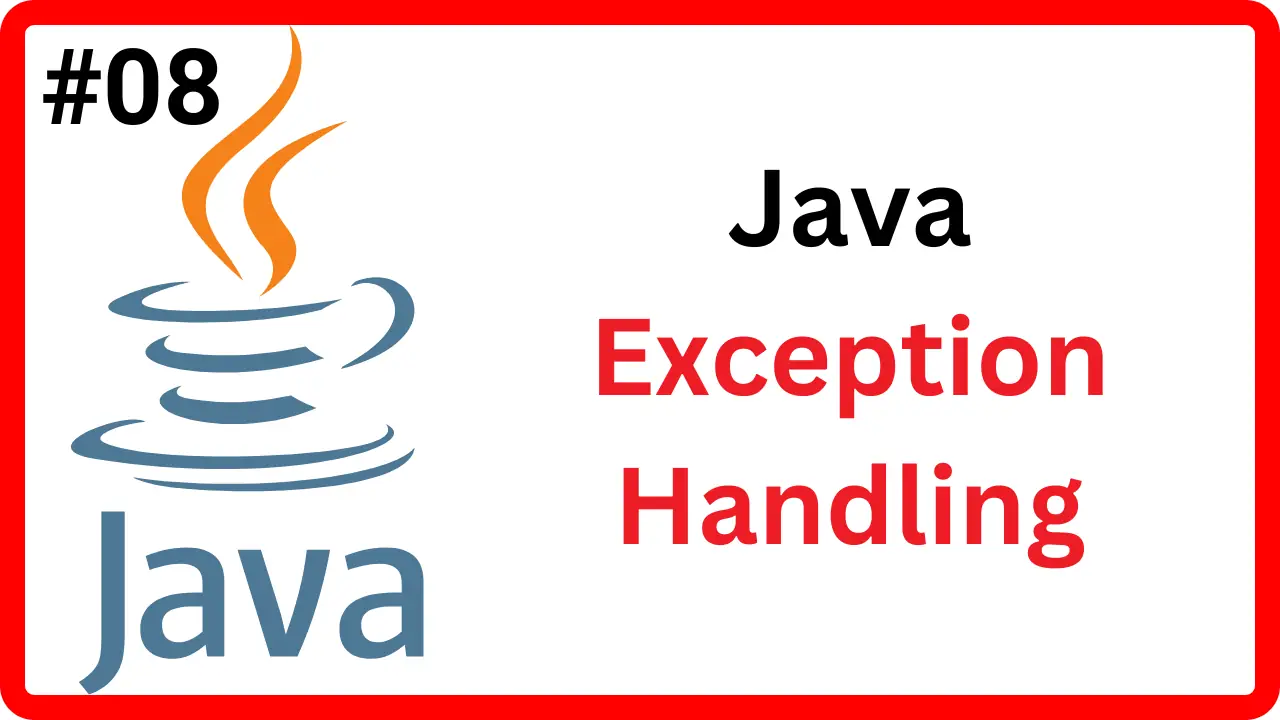📘 Module 8: Exception Handling in Java
🔷 1. Exception Handling क्या होता है?
📌 Definition:
Java में exception एक ऐसा situation होता है जो program के execution को रोक देती है, जैसे – divide by zero, null value access करना, file ना मिलना आदि।
➡️ Java हमें एक structured तरीका देता है ताकि हम इन situations को handle कर सकें — जिसे कहते हैं: Exception Handling
🎯 Real-Life Example:
मान लीजिए आप ATM से पैसे निकाल रहे हैं:
- अगर account में balance नहीं है तो?
- अगर server down है तो?
👉 ये सब exceptions हैं — जिन्हें system को crash किए बिना handle करना चाहिए।
🔧 Java में Exception Handling कैसे किया जाता है?
Java में exception handle करने के लिए हम ये keywords use करते हैं:
✅ Keywords:
| Keyword | Use |
|---|---|
try | risky code यहाँ लिखा जाता है |
catch | exception आने पर क्या करना है |
finally | code जो हर हाल में चले |
throw | manually exception फेंकने के लिए |
throws | method से exception declare करने के लिए |
🔹 Basic Syntax:
try {
// Risky code
} catch (ExceptionType e) {
// Handle error
} finally {
// Clean-up code
}
✅ Example:
public class Test {
public static void main(String[] args) {
try {
int a = 10 / 0; // Risky line
} catch (ArithmeticException e) {
System.out.println("Divide by zero not allowed");
} finally {
System.out.println("This will always run");
}
}
}
🔷 2. Common Exceptions in Java
| Exception Type | Occurs When |
|---|---|
ArithmeticException | Divide by zero |
NullPointerException | Accessing null object |
ArrayIndexOutOfBoundsException | Invalid array index |
NumberFormatException | Wrong string to number |
IOException | File or input error |
🔹 Multiple Catch Blocks:
try {
// Risky code
} catch (ArithmeticException e) {
System.out.println("Math Error");
} catch (NullPointerException e) {
System.out.println("Null Error");
}
🔷 3. throw और throws में अंतर
🔹 throw – खुद से exception फेंकना
throw new ArithmeticException("Manually thrown");
🔹 throws – method बताता है कि ये exception फेंक सकता है
void readFile() throws IOException {
// risky file code
}
✅ Best Practices:
- हर method में exception को properly handle करें
- कभी भी empty
catchblock न रखें - Reusable custom exception class बनाएँ
- Resource clean-up के लिए
finallyयाtry-with-resourcesuse करें
🧾 Summary Table:
| Feature | Example |
|---|---|
try-catch | Handle runtime exception |
finally | Clean-up (file close, db close) |
throw | Custom exception throw |
throws | Method declaration |
🧪 Practice Exercise Ideas:
- Divide by zero handle करना
- File ना मिलने पर message print कराना
- Array index bound exception handle करना
- Custom exception बनाना जैसे:
InsufficientBalanceException
📘 Interview Questions:
- What is exception handling?
- Difference between checked & unchecked exceptions?
- Can you have multiple catch blocks?
- What is finally? Can it be skipped?
- Difference between throw and throws?
🖼 Text-Based Flow Diagram:
try {
→ risky code
}
catch (Exception) {
→ if error occurs, handle here
}
finally {
→ always executes
}

Comments